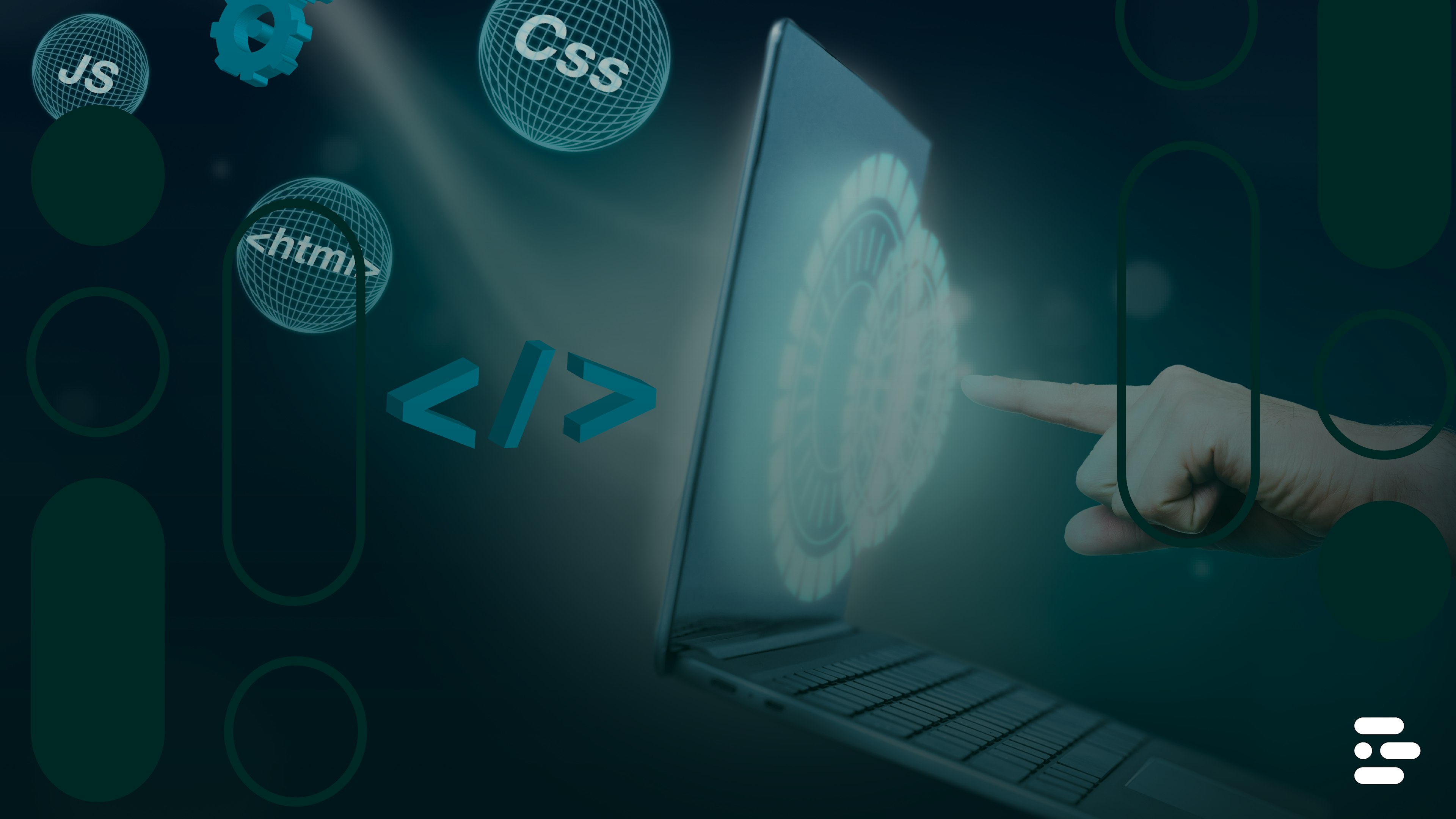RAD and Cross-Functional Collaboration: The Secret to Accelerating Development


Nowadays, speed is everything. Businesses strive not only to deliver high-quality products and services but also to bring them to market as quickly as possible to outpace competition. To achieve this, development methodologies must change, incorporating lighter, more adaptable frameworks to foster innovation and speed up delivery. This is where Rapid Application Development (RAD) and cross-functional collaboration come into play, providing an integrated solution that combines an agile approach to development with the power of teamwork across different fields of expertise.
In this article, we'll explore the interconnection between RAD and cross-functional collaboration, and show how they work together to accelerate the software development process, ultimately enabling businesses to stay both competitive and innovative. We’ll delve into the principles behind each concept, explore the benefits of their integration, and provide insights into best practices on how to harness their combined potential.
What is RAD?
RAD responds to Rapid Application Development, which is a software development methodology that prioritizes speed over planning and documentation. It’s been a while since RAD was presented as an alternative to the traditional “Waterfall” methodology by James Martin in the 1980s, “Waterfall” methodology proposes a linear sequence of steps to accomplish software development projects: requirements, design, implementation, testing, and maintenance, this makes that a project a to be delivered as an “all-or-nothing” product. On the contrary, the RAD proposed the delivery of incremental releases of working prototypes through a feedback loop with the stakeholders which perform a critical role in this continuous refinement loop cycle.
Benefits of RAD:
- Fast value delivery: RAD’s iterative approach allows for quicker prototyping and enables businesses to deliver working and tailored products into users’ hands faster.
- User-Centric: The user feedback received is over an existing and working product, creating a better product from the user's standpoint and meeting expectations with minimal rework.
- Flexibility: Businesses can choose which point should be prioritized to be delivered first, with all the users’ feedback gathered and a looping project cycle, it’s easy to accommodate new refinement tasks.
What is Cross-Functional Collaboration?
Nowadays it is really important to understand the complexity of communication between departments and professionals from different educational backgrounds and with different skills. Cross-Functional collaboration is the practice of combining skill sets and expertise from multiple departments within the organization working towards a common goal.It allows teams to develop a holistic perspective of the development process. When talented individuals from different departments work together, it’s easier to spot potential problems, solve issues, and enhance productivity. These teams also allow feedback to be shared openly, reducing information gaps and limiting problems caused by miscommunication.
Benefits of Cross-Functional Collaboration:
- Accountability & Ownership: When everyone is involved from beginning to end, the team from designers to developers and marketers shares the responsibility for the project’s success
- Perspective diversity: Different disciplines bring their perspectives and knowledge resulting in more innovative solutions. With this mix of skillsets, the team can consider more possibilities and spot blind spots easily.
- Improved quality and Faster resolution: Cross-Functional communication leads to shorter communication, this accelerates the detection of inconsistencies, saving time and reducing redundancy.
How RAD and Cross-Functional communication Accelerate Development
While both RAD and Cross-Functional communication individually contribute to improving efficiency, combined together, they unlock an exponential potential to accelerate the development process. Here are some key reasons:
Stakeholder Involvement During Design & Feedback Loops
In RAD, feedback loops between stakeholders and developers are fast and frequent. Cross-functional collaboration ensures that a range of experts and teams provide input early and throughout the prototyping process. Developers don’t have to wait for formal approval gates to receive critical insights from marketing, finance, user experience (UX), or sales teams.
For instance, consider a software product designed to improve customer service. If the development team is working in isolation, they might miss out on important features that align the product with customer service workflows. With cross-functional collaboration, the customer service, design, product, and tech teams can all provide input. Each team has valuable insights based on customer pain points, platform scalability, or UI/UX concerns, which creates a more holistic product.
Reducing Gaps in Documentation
RAD's lighter documentation approach requires a strong knowledge exchange between team members, which is only possible if communication flows freely. When departments work too much in silos, knowledge gathering, and communication become taxing, leading to gaps, misunderstandings, or overlooking crucial details.
Cross-functional collaboration bridges this communication gap by ensuring that all departments stay synchronized. Real-time updates on changes or adjustments ensure that the project is on track and matches up with what customers and stakeholders want.
Better End-User Alignment
One strength of RAD is its user-centered design, but user expectations may span both technical and non-technical aspects of the product. Cross-functional collaboration ensures that expertise from departments like marketing, customer service, and sales are incorporated into iterations early, preventing development efforts from veering off course.
For example, when building a new CRM system, developers and product teams work closely with sales and support teams to understand the exact workflows users follow daily. Feedback from diverse functions helps address user concerns that cross purely technical ones, such as software ease of use, integrations, or user adoption strategies.
Fostering Agility and Flexibility
In a fast-evolving business landscape, priorities can shift suddenly. RAD’s adaptability is strengthened by cross-functional collaboration as various teams are continuously engaged in the development process. This fosters a heightened degree of responsiveness so that the project can pivot to new requirements or trends, with input from all necessary functions.
For example, if a new regulatory update suddenly alters how customer data should be stored, cross-functional collaboration allows legal and compliance teams to quickly notify developers. Immediate action can be taken to modify the product's data handling, avoiding costly rework later in the process.
Empowerment through Transparency and Accountability
RAD’s iterative nature often leads to frequent product adjustments. Clear ownership of tasks and transparency are critical to maintaining accountability. Through cross-functional collaboration, a shared understanding of roles, goals, and expectations is cultivated among teams, ensuring that deliverables are met efficiently. Transparency through regular updates, team discussions, and collaborative tools allows each team to stay informed on development progress.
Moreover, shared accountability motivates team members to perform well, knowing that their input impacts both their department’s goals and the product as a whole.
Best Practices for Leveraging RAD and Cross-Functional Collaboration
To maximize the synergy between RAD and cross-functional collaboration, teams need to adopt effective strategies and best practices:
Build the Right Teams
Identify and assemble a team of people with complementary skill sets from various functions. Include representatives from management, marketing, development, design, and, when applicable, sales or operations. This should also include stakeholders from departments like legal, compliance, and quality assurance, particularly for products with regulatory requirements.
Create Clear Communication Channels
RAD thrives on continuous feedback and collaboration. Invest in communication tools (e.g., Slack, Microsoft Teams, JIRA) that enable real-time updates for all stakeholders. Weekly check-ins, backlog grooming, and sprint demos work well as touchpoints to keep the team in sync with changing priorities.
Foster a Culture of Collaboration
Even the best frameworks are bound to fail without the right cultural shift. Discourage silo mentality by promoting problem-solving as a collective effort. Establish organizational norms where knowledge-sharing and cross-functional input are valued.
Adapt Prototypes for Diverse Feedback
When building prototypes, create versions with enough flexibility to allow feedback from all departments—whether in tech or non-tech terms. Design so that product demos highlight how the product serves both business and technical requirements.
Adopt Agile Tools and Metrics
While RAD is more of a framework than a rigid methodology, it still allows you to apply agile tools such as backlog prioritization, user stories, and Kanban boards. Regularly track metrics not only for development but also for performance in collaborative teamwork.
Encourage Regular Testing and Validation
Ensure that prototypes and iterations are validated early with customers or users when possible. This should include real-world validations from sales-facing teams or customer service to obtain deep insight into how well the product meets customer needs.
Grow a Feedback Culture with Blameless Retrospectives
After every major iteration or sprint, conduct retrospectives with the team to identify bottlenecks, areas of improvement, and the input of different teams. Focus on learning and improving rather than placing blame on individuals or teams.
Final Thoughts: Accelerating Development with RAD + Collaboration
In the era of digital transformation, products and services must be developed not just faster, but with a keen understanding of diverse stakeholder needs. The combination of RAD’s iterative, fast-paced nature with the collective insight fostered by cross-functional collaboration offers a perfect solution to today’s development challenges.
By creating flexible prototypes, constantly integrating cross-departmental feedback, and ensuring real-time, transparent communication, businesses can truly accelerate their software development lifecycle while maintaining high quality and user satisfaction.
The secret behind radically faster time-to-market development lies in RAD and cross-functional collaboration—a potent mix that has the capacity to fully harness the speed and innovation demanded by modern business environments.
By integrating these methodologies into a development strategy, the organization will unlock synergy, increase efficiency, and ultimately stay competitive in a continuously evolving marketplace.
To further explore how to deliver high-quality software while keeping costs under control, check out our article: Deliver Exceptional Software on a Budget: 6 Strategies for Cost-Effective Development.
Subscribe to our newsletter
Stay informed with the latest insights and trends in the industry
You may also like


